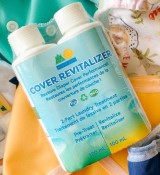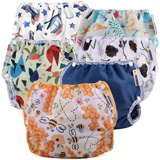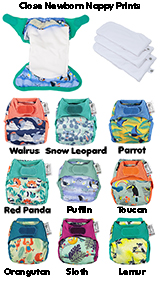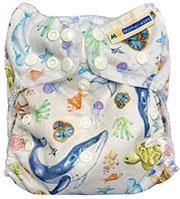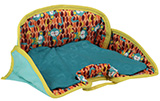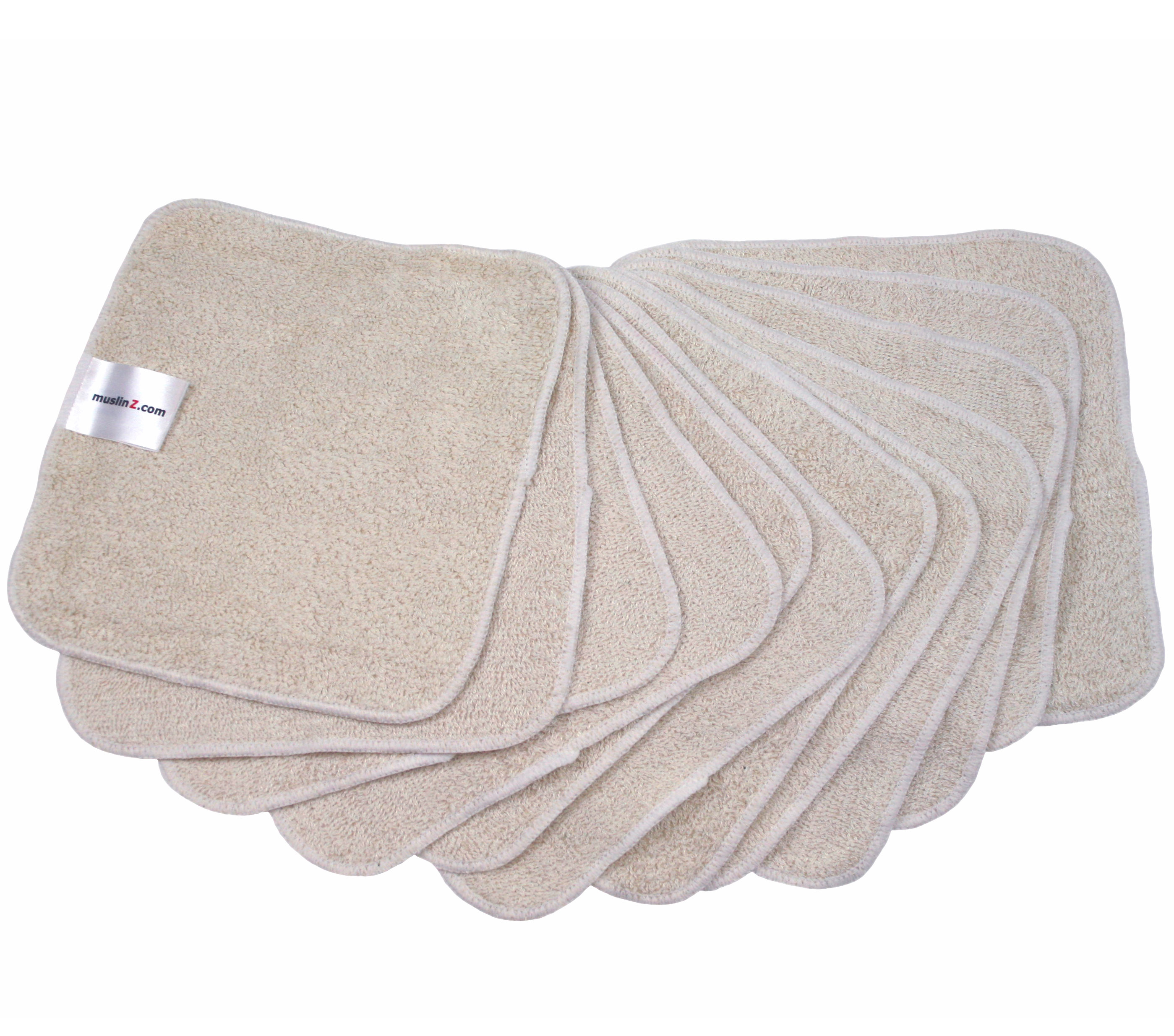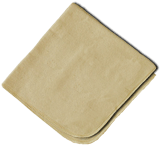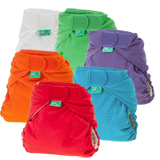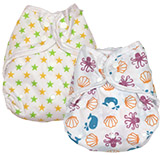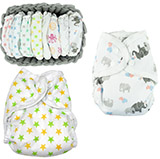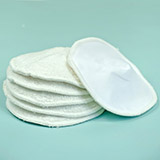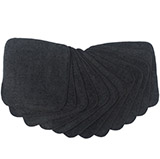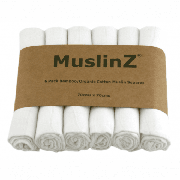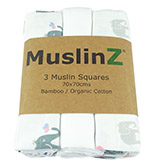Latest News
October 2008
Revised Lifecyle Assessment Study for disposable and washable nappies shows it's all down to how you use your cloth nappies. As indicated by WEN in 2005, it just depends how you wash them , how many babies you use them for and which nappies you choose in the first place as to how much you save the planet! Read the WEN summary here: using cloth nappies can save 40% carbon emissions over disposables. April 30th 2008 New Dutch study shows significant environmental benefits of washable nappies over disposable nappies:"Washable nappies are better"April 30, 2008 Edition 2Amsterdam - Washable nappies contribute to a better environment, a Dutch foundation says. Hans van Dijk of the non-governmental organisation Milieu Centraal in Utrecht yesterday said new research demonstrated washable nappies were substantially better for the environment than single-use ones. "Contrary to all previous studies that looked primarily at the damage to the environment - starting from the moment a customer buys one type of diaper or another - our study also looked at the production process, including transportation. "We found that washable diapers are up to seven times better for the environment than single-use diapers." - Sapa-dpa This study takes into account the complete impact of washable vs disposable nappies including the environmental impact of all the transportation required of disposables. The full report may be seen at www.milieucentral.nl A translation of the summary may be read here: 2005-2008 Meanwhile in the UK we are still grumbling about the fact the original widely criticised 2005 lifecycle analysis report published by The Environment Agency (full report click here) continues to be quoted despite the update (above)!. This was at the time met with some criticism by The Womens Environmental Network due to statistical inaccuracies caused by small sample size of the cloth nappy users compared with disposable nappy users. 2000 disposable nappy users were surveyed compared with just 117 cloth nappy users - however this sample was further reduced to just 32 users of terry squares for the purposes of this report, resulting in some instances just two respondents being used for some aspects of the findings. The full response from WEN at the time can be found here: Of particular concern is the study's reliance on the method of washing. Traditionally terry squares were laundered at higher temperatures and /or soaked in chemical sanitisers. Naturally by relying on terry squre users for the washing methodology isn't necessarily taking into account the washing methods recommended by manufacturers of modern shaped nappy systems, sales of which outnumber plain terry squares from sites such us this, and indeed some derision has been reported in the press (read Leo Hickman in The Guardian) as apparently 9% of nappy users iron their nappies! Significantly glaringly obviously to me is the fact that the report acknowledges that washable napies are not disposed of but saved for re-use - yet no allowance is made for the fact that the nappy users could already be using secondhand nappies which instantly has a huge saving in environmental impact. Indeed from our own observation on sales here, the vast majority of parents who go on to have further babies reuse their nappies, and once finished with sell them on or pass them on to others. Therefore unlike the study's assumption that the average user will have used a total of 47 nappies, in reality the total number used will be significantly lower when taking the secondhand nappies into account. If you allow for the fact that mothers have an average of just under 2 babies, then surely these very same nappies will get used for the second? Which instantly cuts the environmental impact. We won't dwell too much on the fact that there was little representation from the cloth nappy industry(one meeting) on the advisory committee (yet there was from the disposable manufacturers), but leave you to draw your own conclusions as to why the report's summary doesn't draw any significance to the impact of one significant statement in the report that the end use of the cloth nappy is that it is saved for reuse. The LCA report concludes that the disposable user cannot minimise the impact of using nappies in any way other than by using less nappies, the onus is on the manufacturer to improve the environemntal impact. However with washable nappies parents <i>can</i> choose to make a noticable reduction in the environmental impact. WEN concludes that significant energy savings can be made compared with the methodology of the report by having 24 nappies, washing at no more than 60 in an A rated machine could reduce the energy used in washing by 37.8% and cutting global warming by 17% compared with the methodology suggested in the survey. This report was due to be revised in 2007, but as of mid 2008 we are still waiting.We recommend the following ways in which you can use washable nappies to minimise global environmental impact of using nappies:
- Choose nappies made from organic cotton or hemp/green cotton which are grown without the use of pesticides.
- Choose nappies made locally within UK or EEC to minimise miles travelled.
- Avoid PVC wraps, use some organic wool or wool wraps if possible (NB:not always suitable)
- Buy secondhand nappies or reuse your nappies for subsequent babies
- Avoid soaking, dry pail (store dry) in a bucket with a close fitting lid. If you do soak avoid sanitisers and use a natural agent eg lavender oil
- Use washable liners
- Use an A rated energy efficient washing machine
- Wash at 40 in preference and 60 maximum,nowadays most people wash nappies that are wet only at 40
- Especially if your washing machine doesn't adjust the volume of water to the weight of the load automatically, always wash a full load - add other items such as towels and clothing to your wash to make a full load
- Use an eco-detergent
- Don't use a conditioner, it reduces absorbency and is unnecessary
- Line or air dry do not tumble dry, and avoid turning the radiators on to dry washing
- Never iron nappies or wraps
- Sell or pass on your nappies after you have finished with them.
A main issue for UK nappy users is waste and what to do with it
We live on a heavily populated island, and create a lot of waste.
In the UK about 800,000 tonnes of nappy waste are produced each year, which local authorities must dispose of - estimates vary but somewhere between 2.6-4% of the UK's domestic waste, in some areas such as Slough the current estimate (May 2005) is 7% of their waste. For every £1 spent on 'disposables', it costs the taxpayer around 10p to dispose of them! (1) Each baby could produce up to two tons of soiled disposable nappies. Disposables then usually end up in landfill sites, complete with faeces which may contain viruses, paper pulp, plastic and absorbent gel.Paper pulp is the largest single constituent of the disposable nappy. Ancient and diverse Canadian and Scandinavian forests are being felled and replaced with monoculture plantations which are intensively managed with pesticides and fertilisers to produce the pulp used in Britain. Many animal species are at risk from these forestry practices, and much water and some chemicals are used in converting the wood to pulp.Disposables also contain plastic produced from non-renewable crude oil resources. Some nappies contain biodegradable plastic, however degradation only takes place given the right conditions, which may not be found in British landfill sites, where most throwaway nappies end up. Additionally, modern premium 'disposable' nappies contain an increasing proportion of sodium polyacrylate, the absorbent gel. It is not known how long a disposable nappy will take to breakdown, estimates vary from between 200-500 years. What is certain however, is that the increasing volumes of non-decomposable rubbish put into landfill sites by our throwaway society today will lead to problems for our children in future years. Most local authorities are now having to implement tough measures to reduce the amount of waste collected at the kerbside and to encourage take up of recycling rather than fill up landfill sites. It is a sad fact that waste production is increasing rapidly. Despite my local Wokingham Unitary Authority increasing the percentage of household waste recycled to almost 30%, the amount going to landfill has also increased by 3%. <font size="2" face="Verdana, Arial, Helvetica, sans-serif">Disposable nappies are the largest single product category in household waste. While waste amounts are still rising, the EU Landfill directive requires a reduction of 35% in biodegradable waste over a 25 year period. Aside from reducing the amount of waste we generate, and increasing the amount we recycle, or compost, we can also help by buying recyled products (see UK recycled products guide) and by using reusable products - such as cloth nappies! Many councils now offer a rebate to parents using cloth nappies.Sources:- 1 The Real Nappy Association- 2 The Women's Environmental Network
